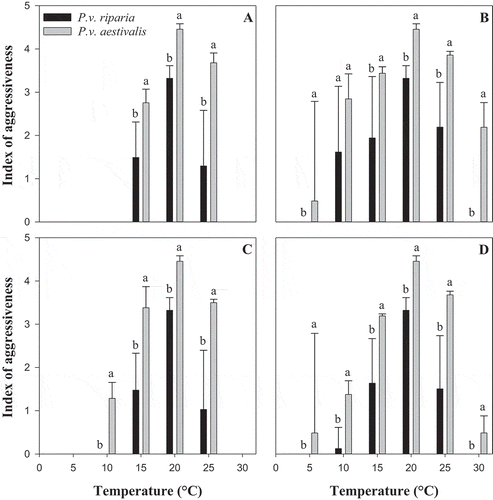Figures & data
Table 1. Analysis of variance of the effect of temperature on the zoospore release (empty sporangia) of two formae speciales of Plasmopara viticola
Fig. 1 Effect of temperature and incubation time on zoospore release of Plasmopara viticola f. sp. riparia and P. viticola f. sp. aestivalis. Error bars represent the standard error (STD) of mean of empty sporangia
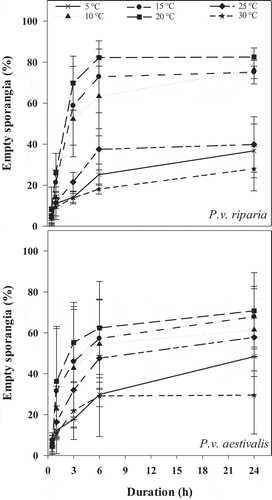
Table 2. Analysis of variance of the effect of temperature on the aggressiveness variables of two formae speciales of Plasmopara viticola during the infection, penetration and sporulation processes
Table 3. Parameter estimates of the Gaussian models fitted to the aggressiveness variables (incidence, severity and sporulation efficiency) as a function of temperature for the two formae speciales, Plasmopara viticola f. sp. aestivalis (P.v. aestivalis) and P. viticola f. sp. riparia (P.v. riparia), during the infection and sporulation processes
Fig. 2 Effect of temperature on the latency of the two formae speciales, Plasmopara viticola f. sp. aestivalis (P.v. aestivalis) and P. viticola f. sp. riparia (P.v. riparia), (a) during the infection process, (b) during the penetration process, (c) during the sporulation process, and (d) during all three processes (the average of all three processes). Error bars represent the standard error of mean (STD) of the latency. For each temperature, values of bars with the same letter are not significantly different according to Tukey’s test (P ≤ 0.05)
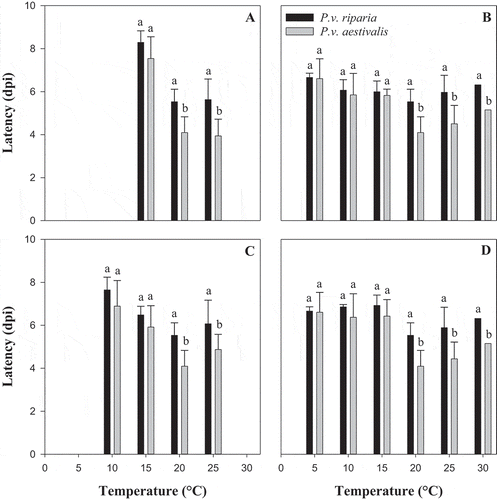
Fig. 3 Representation of the Gaussian models of the effect of temperature on the aggressiveness of the two formae speciales, Plasmopara viticola f. sp. aestivalis (P.v. aestivalis) and P. viticola f. sp. riparia (P.v. riparia), during the infection process. (a) Incidence, (b) Severity and (c) Sporulation efficiency

Table 4. Parameters of the linear models (LM) of the effect of temperature on the aggressiveness of the two formae speciales, Plasmopara viticola f. sp. aestivalis (P.v. aestivalis) and P. viticola f. sp. riparia (P.v. riparia), during the penetration process
Fig. 4 Representation of linear regression analysis of the effect of temperature on the aggressiveness of the two formae speciales, Plasmopara viticola f. sp. aestivalis (P.v. aestivalis) and P. viticola f. sp. riparia (P.v. riparia), during the penetration process. (a) Incidence, (b) Severity and (c) Sporulation efficiency
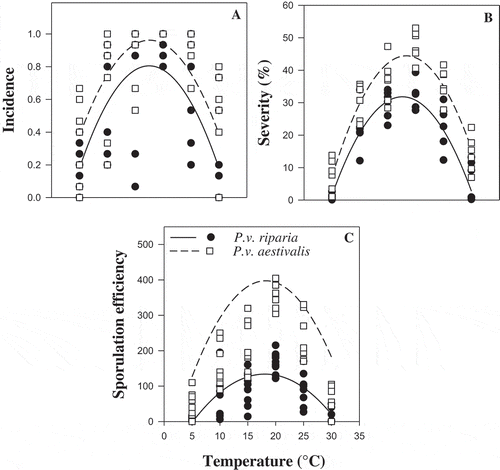
Fig. 5 Representation of the Gaussian models (GM) of the effect of temperature on the aggressiveness of the two formae speciales, Plasmopara viticola f. sp. aestivalis (P.v. aestivalis) and P. viticola f. sp. riparia (P.v. riparia), during the sporulation process. (a) Incidence, (b) severity and (c) sporulation efficiency
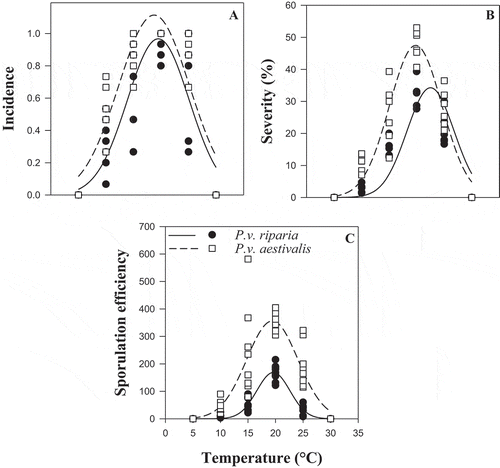
Table 5. Analysis of variance of the effect of temperature on the index of aggressiveness of the two formae speciales, Plasmopara viticola f. sp. aestivalis (P.v. aestivalis) and P. viticola f. sp. riparia (P.v. riparia), during infection, penetration, and sporulation and the global process
Fig. 6 Effect of temperature on the index of aggressiveness of the two formae speciales, Plasmopara viticola f. sp. aestivalis (P.v. aestivalis) and P. viticola f. sp. riparia (P.v. riparia), (a) during the infection process, (b) during the penetration process, (c) during the sporulation process and (d) during all three processes (the average of all three processes). Error bars represent the standard error of mean (STD) of the aggressiveness index. For each temperature, values of bars with the same letter are not significantly different according to Tukey’s test (P ≤ 0.05)
